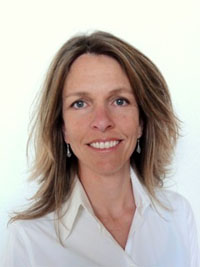Finances at ‘turning point’ for groups

Ineke Mushovic
How well the LGBT groups are doing financially may well depend on whether one sees a glass as “half empty” or “half full,” but a new report, released Tuesday (December 6) by an independent think tank, certainly provides some facts to ponder.
Fewer than three percent of LGBT adults make contributions to national LGBT organizations, and the number of individuals giving to LGBT groups dropped 12 percent between 2009 and 2010, a trend that has been in play for the past five years.
The nation’s 40 largest and most important LGBT groups increased their combined revenue (cash and in-kind) by one percent between 2009 and 2010 from $163 million to $164 million, and they spent all but $4.6 million of that. But the top 10 anti-gay groups spent “almost three times as much” as the 40 “major” pro-LGBT groups in 2010.
On average, national LGBT groups spend about 79 percent of their revenue on programs, 10 percent on management and administration, and 11 percent on fundraising.
While there are many harsh realities there, the Movement Advancement Project (MAP), an independent think tank devoted to studying how best to marshal the LGBT movement’s resources to “speed advancement of equality for LGBT people,” thinks the movement may be at a “turning point” financially.
“While [LGBT organizations] continued to cut expenses in 2010, organizations saw a slight increase in 2010 revenue, and are projecting expense budget increases for 2011,” said MAP in its 2011 National LGBT Movement Report. “This,” says MAP, “suggests the LGBT movement may be at a turning point, or at least stabilizing, after seeing large drops in expenses and revenue over the last three years, mostly related to the economic downturn.”
MAP concludes that the “downward trend” in expenditures by the groups, a trend “precipitated by the economic downturn, may be at or nearing an end.” The evidence, it says, is the fact that national LGBT groups’ projected expense budgets are 13 percent higher this year than last while their debt is smaller.
The report also reflects what economists and politicos have been discussing for a long time about the trend of wealth accumulating among corporations and a few individuals. The average LGBT group, says MAP, receives 45 percent of its revenue from its 10 largest contributors. At the same time, organizations are increasingly getting their revenue from “corporations, bequests, in-kind contributions, fundraising events, and other sources of income.”
“Of particular concern,” said the MAP report, “contributions from individual donors dropped sharply (a 14% drop, or $9.3 million) between 2009 and 2010. This revenue drop was mostly offset by revenue increases from corporations (41% increase, or $1.8 million),
bequests (30% increase, or $1.6 million), fundraising events (6% increase, or $1.1 million) and other income (126% increase, or $3.2 million).”
MAP made its analysis using financial data from 40 LGBT groups, 27 of which had annual budgets of more than $1 million and 13 additional organizations whose missions are considered “critical” to the LGBT movement. The groups included such well-known national organizations as the Human Rights Campaign, Lambda Legal, and the Gay and Lesbian Victory Fund, as well as state groups, including MassEquality, the Empire State Pride Agenda, and Equality California.
MAP Executive Director Ineke Mushovic said MAP used audited financial data for each group. Where an organization, such as the Human Rights Campaign, has a tax-deductible entity (501c3), a non-tax-deductible entity (501c4), and/or a political action committee, MAP combined the data and showed it all under one group name. Mushovic said MAP agreed with participants not to release financial data on individual groups.
But Mushovic said the top 10 groups, in terms of revenue, are Equality California, the Gay and Lesbian Alliance Against Defamation, Gay, and Straight Education Network, the Human Rights Campaign, Lambda Legal, the National Center for Lesbian Rights, Out & Equal, the Point Foundation, Senior Action in a Gay Environment, and the National Gay and Lesbian Task Force.
MAP said the 40 LGBT groups represent 71 percent of all money spent by LGBT advocacy groups. It calculated this by analyzing 990 forms filed with the Internal Revenue Service by LGBT groups reporting more than $25,000 in revenue.
The five-year-old MAP organization issued a report last August, showing that the LGBT movement is making progress but is being dramatically outspent by its opponents. That report, too, noted that only 3.4 percent of LGBT people made a contribution to national LGBT groups in 2009.
The 2010 report noted that, while 550 LGBT non-profit groups collected a total of $574 million in contributions during 2009, most of that money ($299 million or 52 percent) went to providing health services and community center programs. About $192 million (33 percent) was spent on advocacy, and about $35 million (6 percent) on legal challenges. Arts and recreation accounted for about $36 million (6 percent). Only $13 million (2 percent) is spent on public education. The current study was funded by 14 foundations that provide funding to LGBT groups, including the foundations started by well-known gay philanthropists such as David Bohnett, David Geffen, Tim Gill, Jim Hormel, and Jon Stryker.


Leave a Reply